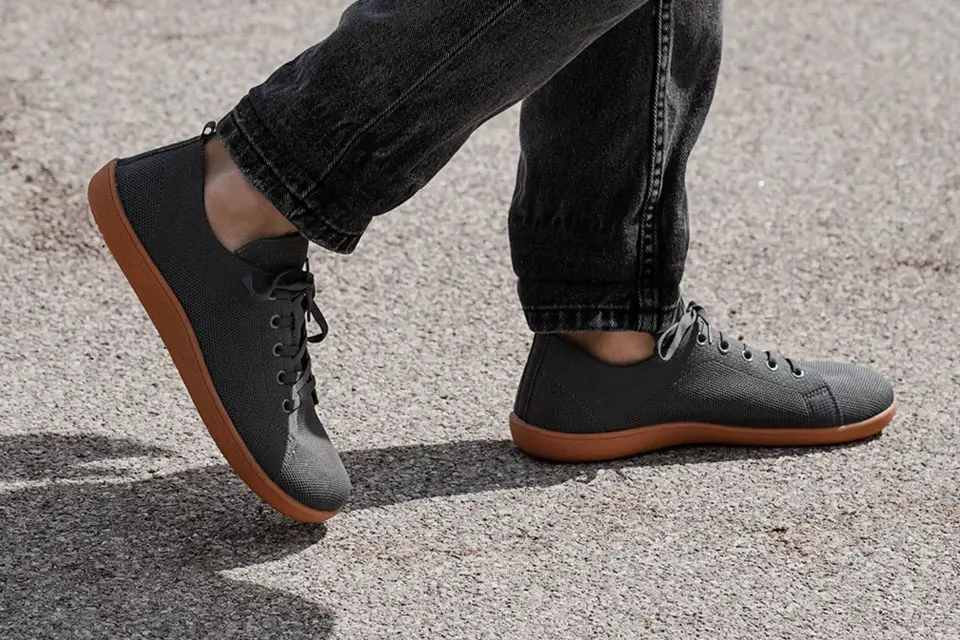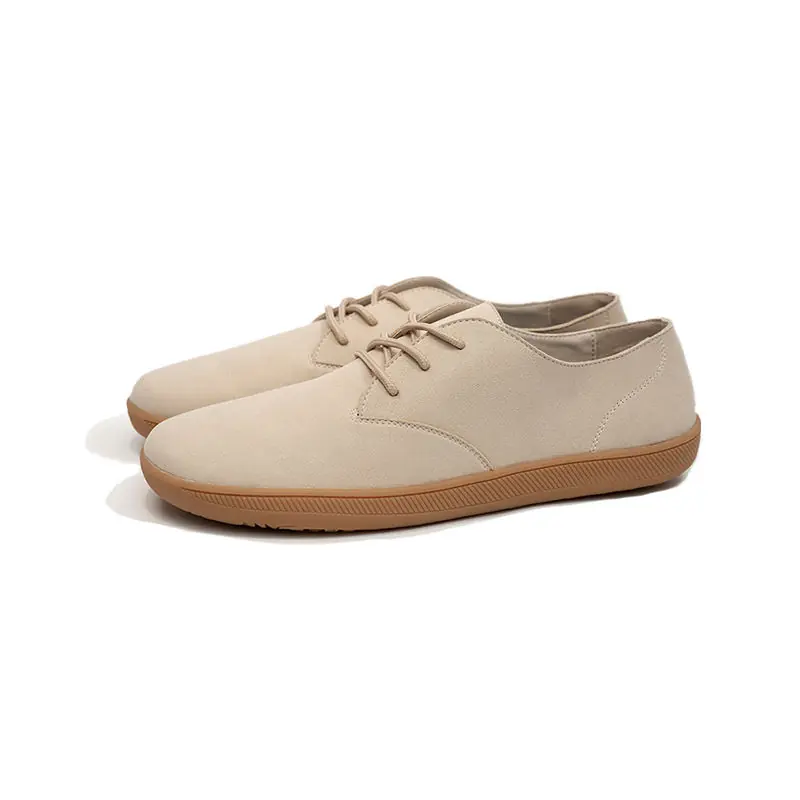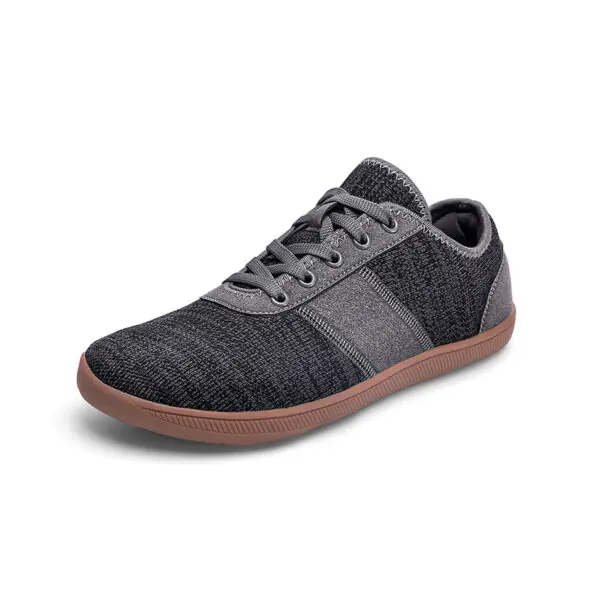
Can I Wear Barefoot Shoes with Flat Feet
In recent years, barefoot shoes have gained significant popularity among fitness enthusiasts and those seeking a more natural approach to footwear. However, for people with flat feet, the question often arises: can I wear barefoot shoes with flat feet? This comprehensive guide will explore the potential benefits, considerations, and expert opinions to help you make an informed decision about whether barefoot shoes are suitable for your flat feet.
Table of Contents
Understanding Flat Feet
Before delving into the compatibility of barefoot shoes with flat feet, it’s crucial to understand what flat feet are and how they affect your body.
What Are Flat Feet?
Flat feet, also known as pes planus or fallen arches, is a condition where the arch of the foot collapses, causing the entire sole of the foot to come into contact with the ground. This condition can be present from birth or develop over time due to various factors such as aging, injury, or certain health conditions.
Types of Flat Feet
There are two main types of flat feet:
- Flexible Flat Feet: The arch appears when the foot is not bearing weight but flattens when standing.
- Rigid Flat Feet: The arch is always flat, regardless of whether weight is being applied.
Common Symptoms of Flat Feet
- Pain in the feet, ankles, knees, hips, or lower back
- Easily tired feet
- Difficulty with certain physical activities
- Swelling along the inside of the ankle
The Barefoot Shoe Philosophy
Barefoot shoes, also known as minimalist shoes, are designed to mimic the experience of walking or running barefoot while providing minimal protection from the environment. The philosophy behind barefoot shoes includes:
- Promoting natural foot movement
- Strengthening foot muscles
- Improving proprioception (awareness of body position)
- Encouraging a more natural gait

Can Barefoot Shoes Help Flat Feet?
The question of whether barefoot shoes are good for people with flat feet is complex and often debated among podiatrists and biomechanics experts. Let’s explore the potential benefits and considerations:
Potential Benefits of Barefoot Shoes for Flat Feet
- Strengthening Foot Muscles: Barefoot shoes may help strengthen the intrinsic muscles of the feet, potentially improving arch support over time.
- Improved Proprioception: The thin soles of barefoot shoes allow for better ground feel, which can enhance balance and foot positioning.
- Natural Arch Development: Some proponents argue that barefoot shoes can encourage the natural development of the arch by allowing the foot to work as nature intended.
- Reduced Reliance on External Support: Over time, wearing barefoot shoes may decrease dependence on orthotics or heavily supportive shoes.
Considerations and Potential Risks
- Initial Discomfort: People with flat feet may experience discomfort when first transitioning to barefoot shoes due to the lack of arch support.
- Increased Strain: Without proper transition, barefoot shoes may initially increase strain on the plantar fascia and other foot structures.
- Varied Individual Responses: Not all people with flat feet will respond the same way to barefoot shoes. Some may experience benefits, while others may find them unsuitable.
- Severity of Flat Feet: The degree of flat-footedness can influence the suitability of barefoot shoes. Those with severe cases may require more support.
Expert Opinions on Barefoot Shoes for Flat Feet
Opinions among foot health professionals regarding barefoot shoes for flat feet are diverse:
“For some people with flat feet, barefoot shoes can be beneficial in strengthening the foot muscles and improving arch function. However, it’s crucial to approach the transition gradually and under professional guidance.” – Dr. Emily Chen, Podiatrist
“While barefoot shoes may offer benefits for some individuals with flat feet, they’re not a one-size-fits-all solution. A thorough assessment of foot structure and function is essential before making the switch.” – Dr. Mark Thompson, Biomechanist
Transitioning to Barefoot Shoes with Flat Feet
If you’re considering trying barefoot shoes with flat feet, a gradual and careful transition is crucial:
- Start Slowly: Begin by wearing barefoot shoes for short periods, gradually increasing duration over time.
- Choose Appropriate Models: Look for barefoot shoes with a wider toe box and minimal cushioning. The Men’s Wide Minimalist Barefoot Shoes offer a good balance of space and minimalist design.
- Incorporate Foot Strengthening Exercises: Engage in exercises specifically designed to strengthen the feet and improve arch function.
- Listen to Your Body: Pay attention to any pain or discomfort and adjust your approach accordingly.
- Consult a Professional: Work with a podiatrist or physical therapist who can guide you through the transition and monitor your progress.
Exercises for Flat Feet
Incorporating specific exercises can help strengthen the feet and potentially improve arch function when transitioning to barefoot shoes:
- Toe Spreads: Spread your toes wide, hold for 5 seconds, then release. Repeat 10 times.
- Short Foot Exercise: Attempt to shorten your foot by pulling the ball of your foot towards your heel without curling your toes.
- Calf Raises: Stand on the edge of a step, raise your heels, then lower them below the step level.
- Towel Curls: Place a towel on the floor and use your toes to scrunch it towards you.
- Arch Lifts: While seated, keep your toes and heel on the ground and try to lift your arch.
Performing these exercises regularly can complement the use of barefoot shoes and potentially enhance their benefits for flat feet.
Choosing the Right Barefoot Shoes for Flat Feet
When selecting barefoot shoes for flat feet, consider the following factors:
- Wide Toe Box: Ensures ample space for toe splay and natural foot movement.
- Zero Drop: A flat sole with no height difference between heel and toe promotes natural foot positioning.
- Minimal Cushioning: Allows for better ground feel and foot muscle engagement.
- Flexibility: The shoe should bend easily to accommodate natural foot movement.
- Durability: Look for shoes that can withstand the increased pressure from flat feet.
Some recommended options include:
- Non Slip Barefoot Walking Shoes for Men: Offers stability and comfort for everyday use.
- Women’s Zero Drop Non Slip Barefoot Exercise Shoes: Provides a balance of minimalist design and support for workouts.

Comparing Barefoot Shoes to Traditional Supportive Shoes for Flat Feet
Understanding the differences between barefoot shoes and traditional supportive shoes can help you make an informed decision:
| Feature | Barefoot Shoes | Traditional Supportive Shoes |
|---|---|---|
| Arch Support | Minimal to none | Significant built-in support |
| Sole Thickness | Very thin (3-10mm) | Thick (15-30mm+) |
| Flexibility | Highly flexible | Often rigid |
| Toe Box | Wide | Often narrow |
| Weight | Very light | Heavier |
| Heel-to-Toe Drop | Zero drop | Usually 8-12mm drop |
The Impact of Barefoot Shoes on Flat Feet Over Time
The long-term effects of wearing barefoot shoes with flat feet can vary:
Potential Positive Outcomes
- Strengthened foot muscles
- Improved arch function
- Enhanced balance and proprioception
- More natural gait pattern
Possible Challenges
- Initial discomfort or pain
- Longer adaptation period
- Potential for overuse injuries if transition is too rapid
It’s important to note that individual experiences may vary, and long-term studies on the effects of barefoot shoes on flat feet are limited.
Combining Barefoot Shoes with Other Treatments for Flat Feet
Barefoot shoes can be part of a comprehensive approach to managing flat feet:
- Custom Orthotics: Some people may benefit from using custom orthotics in conjunction with barefoot shoes for certain activities.
- Physical Therapy: Working with a physical therapist can help strengthen foot muscles and improve overall foot function.
- Massage and Stretching: Regular foot massages and stretching exercises can complement the use of barefoot shoes.
- Gradual Transition Plan: A carefully planned transition from supportive shoes to barefoot shoes, guided by a professional.
Barefoot Shoes for Different Activities with Flat Feet
Considering barefoot shoes for various activities when you have flat feet:
Walking
For daily walking, shoes like the Zero Drop Wide Men’s Non Slip Barefoot Shoes for Walking can provide comfort and stability while encouraging natural foot movement.
Running
If you’re interested in barefoot-style running with flat feet, a gradual transition is crucial. Start with short distances and listen to your body.
Strength Training
Barefoot shoes can be beneficial for strength training, as they provide a stable base and allow for better ground feel. The Gym Barefoot Training Shoes for Lifting offer a good balance of minimalist design and stability.
Everyday Wear
For daily use, consider shoes that offer a balance of comfort and barefoot principles, such as the Minimalist Sneakers Casual Barefoot Shoes for Men.
The Role of Foot Strengthening in Barefoot Shoe Adaptation
Strengthening your feet is crucial when transitioning to barefoot shoes, especially for those with flat feet:
- Toe Yoga: Practice moving and spreading your toes to improve dexterity and strength.
- Barefoot Walking: Start with short periods of walking barefoot on safe surfaces.
- Balance Exercises: Practice standing on one foot to improve stability and foot muscle engagement.
- Foot Doming: Attempt to create an arch in your foot without curling your toes.
Incorporating these exercises into your daily routine can significantly enhance your experience with barefoot shoes.
Addressing Common Concerns About Barefoot Shoes and Flat Feet
Many people with flat feet have concerns about transitioning to barefoot shoes. Let’s address some common worries:
- Pain and Discomfort: While initial discomfort is common, persistent pain should be addressed by a professional.
- Lack of Support: Barefoot shoes aim to strengthen your feet naturally, but this process takes time and patience.
- Suitability for High-Impact Activities: Start with low-impact activities and gradually progress as your feet strengthen.
- Aesthetic Concerns: Modern barefoot shoes come in various styles suitable for different occasions.
The Future of Barefoot Shoes for Flat Feet
As research in biomechanics and foot health progresses, we may see more specialized barefoot shoe designs for people with flat feet:
- Customized 3D-Printed Soles: Tailored to individual foot shapes and needs.
- Smart Barefoot Shoes: Incorporating sensors to track foot health and provide feedback.
- Adaptive Materials: Shoes that adjust to the foot’s changing needs throughout the day.
Environmental and Ethical Considerations
When choosing barefoot shoes for flat feet, consider the environmental and ethical aspects:
- Sustainable Materials: Many barefoot shoe brands prioritize eco-friendly materials.
- Durability: Quality barefoot shoes often last longer, reducing waste.
- Ethical Production: Look for brands that ensure fair labor practices.
Conclusion: Can You Wear Barefoot Shoes with Flat Feet?
So, can you wear barefoot shoes with flat feet? The answer is not a simple yes or no. While barefoot shoes can potentially offer benefits such as improved foot strength and natural arch development, they are not suitable for everyone with flat feet.
The decision to wear barefoot shoes with flat feet should be made carefully, considering factors such as:
- The severity of your flat feet
- Your overall foot health and any existing conditions
- Your willingness to undergo a gradual transition period
- Your lifestyle and activity levels
It’s crucial to consult with a podiatrist or foot health professional before making the switch to barefoot shoes, especially if you have flat feet. They can assess your individual needs and guide you through a safe transition if barefoot shoes are deemed appropriate for you.
Remember, the journey to healthier feet is personal and may involve a combination of approaches. Barefoot shoes could be part of that journey, but they should be considered as one tool among many in promoting foot health and function.
If you’re interested in exploring barefoot shoes for flat feet, start by browsing quality options from reputable manufacturers like Custom Barefoot Shoes. With patience, proper guidance, and the right approach, you may find that barefoot shoes can be a positive addition to your foot health regimen, even with flat feet.

FAQs
Can barefoot shoes help improve flat feet?
While barefoot shoes may help strengthen foot muscles and potentially improve arch function over time, results can vary. It’s essential to transition gradually and under professional guidance.
How long does it take to adapt to barefoot shoes with flat feet?
The adaptation period can vary significantly between individuals, ranging from a few weeks to several months. It’s crucial to listen to your body and progress at a comfortable pace.
Are there specific barefoot shoe models recommended for flat feet?
Look for barefoot shoes with a wide toe box, zero drop, and minimal cushioning. Models like the Men’s Wide Minimalist Barefoot Shoes can be a good starting point.
How often should I wear barefoot shoes if I have flat feet?
Start by wearing barefoot shoes for short periods (15-30 minutes) daily, gradually increasing as your feet adapt. Always listen to your body and adjust accordingly.
Are barefoot shoes suitable for all types of flat feet?
Barefoot shoes may not be suitable for all cases of flat feet, particularly severe cases or those accompanied by pain. A professional assessment is crucial before making the switch.
Can I use orthotics with barefoot shoes if I have flat feet?
While it’s possible to use orthotics with some barefoot shoe models, it may counteract the barefoot experience. Consult with a podiatrist to determine the best approach for your specific needs.
